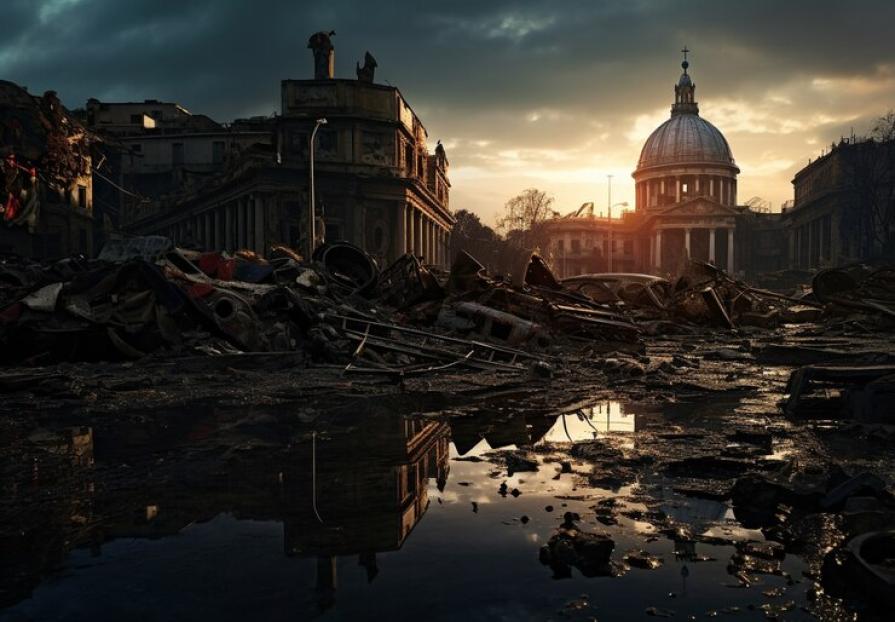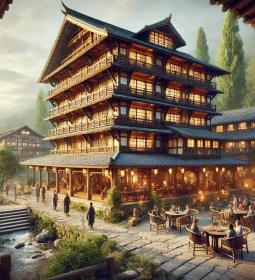There are cities known to everyone: Tokyo, Paris, London and Berlin... They are famous for their architecture, celebrities, and great historical events. There are less popular places that are well known to historians, such as Kyoto. But there are also cities that we learned about only because of the terrible incidents that happened on their territory. They did not seek such fame, but the circumstances were different.
Pripyat, Ukraine

Many people mistakenly think that Chernobyl suffered the most after the explosion at the Chernobyl nuclear power plant on April 26, 1986. However, in fact, most of the damage went to the city of Pripyat, a larger settlement, where 47.5 thousand inhabitants lived before the accident. Now Pripyat is one of many cities and towns in the so-called Exclusion Zone. Officially, it is considered completely abandoned, but it is visited by experienced diggers and tourism enthusiasts (without bypassing areas with high radiation).
Columbine, USA
Columbine is not really a city, but the so-called unincorporated community of Jefferson County, Colorado, USA. However, this community and its eponymous school became notorious after the landmark tragedy. On April 20, 1999, two high school students attacked Columbine High School with weapons and self-made explosive devices. As a result of the attack, 13 people were killed and 23 were injured. The attackers committed suicide after the attack.
The tragedy affected the society of the United States and the rest of the world so seriously that "Columbine" became a household name: almost every incident with school shootings and casualties among children is named after this community.
Fukushima, Japan

It should be noted that the incident that we designate as the Fukushima-1 nuclear power plant disaster and associate with the settlement of the same name is not really an accurate representation. In fact, the disaster affected a large part of Fukushima Prefecture, especially affecting the city of Okuma, where the nuclear power plant is located. Until March 11, 2011, about 11 thousand inhabitants lived here, now their number has decreased to God forbid 900 people. At the same time, the city of Fukushima itself, which many heard about in the early 2010s, did not actually experience significant radiation exposure.
Hiroshima, Japan
Modern Hiroshima is a large Japanese city with a population of more than 1.2 million people, the industrial center of the Chugoku-Shikoku region. However, for us and the majority of the world's population, Hiroshima is primarily associated with the first city in history to be subjected to atomic bombing. On August 6, 1945, the U.S. Army dropped an atomic bomb on Hiroshima, known as "The Kid," with a yield of 13 to 18 kilotons. As a result of the attack, tens of thousands of people instantly died, and the total number of victims from the consequences of the explosion reached 90 thousand. About 90% of the city was destroyed, and modern Hiroshima is essentially a metropolis rebuilt from scratch.
Nagasaki, Japan
This Japanese city is known today as a major port and a thriving metropolis, however, it became famous as the second city to be subjected to atomic bombing by the United States. Interesting fact: Nagasaki could not be the only city - instead it could be "Hiroshima and Kokura". Kokura was originally a U.S. target because of its heavy industry. However, clouds prevented visual bombing, and Nagasaki was chosen instead of Kokura. A nuclear explosion with a capacity of 21 kilotons claimed the lives of approximately 74,000 people, destroying almost all buildings, as in Hiroshima.
Bhopal, India

Many Indian cities such as New Delhi and Mumbai are known for Bollywood and their lively atmosphere. However, there are also little-known cities whose names are difficult to pronounce even for those who often travel to India. One such city is Bhopal, which became tragically popular after the incident with the release of 42 tons of methyl isocyanate at the chemical plant of the American company Union Carbide on December 3, 1984. A toxic cloud enveloped 40 square kilometers of urban area, killing about 30,000 people. The total number of victims is estimated at 150-600 thousand people.
Pompeii, Italy
Pompeii is known for its tragic history associated with the eruption of Mount Vesuvius in 79 AD In addition to Pompeii, under a layer of volcanic ash were buried Herculaneum, Stabiae and several small settlements located near the volcano. Although the tragedy of Pompeii seems widespread, in fact, archaeological research indicates the death of approximately 2,000 people out of 20,000 inhabitants of the city at that time. The rest left the city before the eruption or managed to evacuate after the start of the disaster. But, of course, 2000 people is a huge tragedy for both the ancient world and the modern one.
Today, Pompeii is an open-air museum included in the UNESCO World Heritage List. Tourists can visit this city and enjoy the amazingly preserved forum, basilica, temples, theaters, baths and many other residential, cultural and industrial structures.













